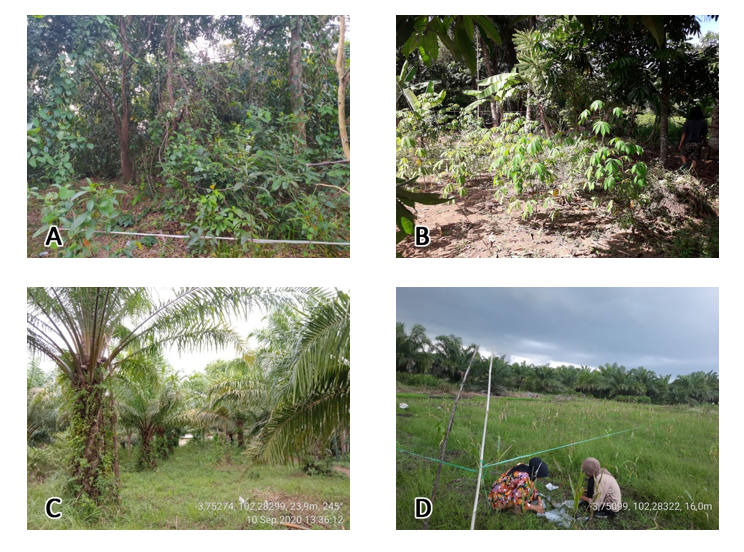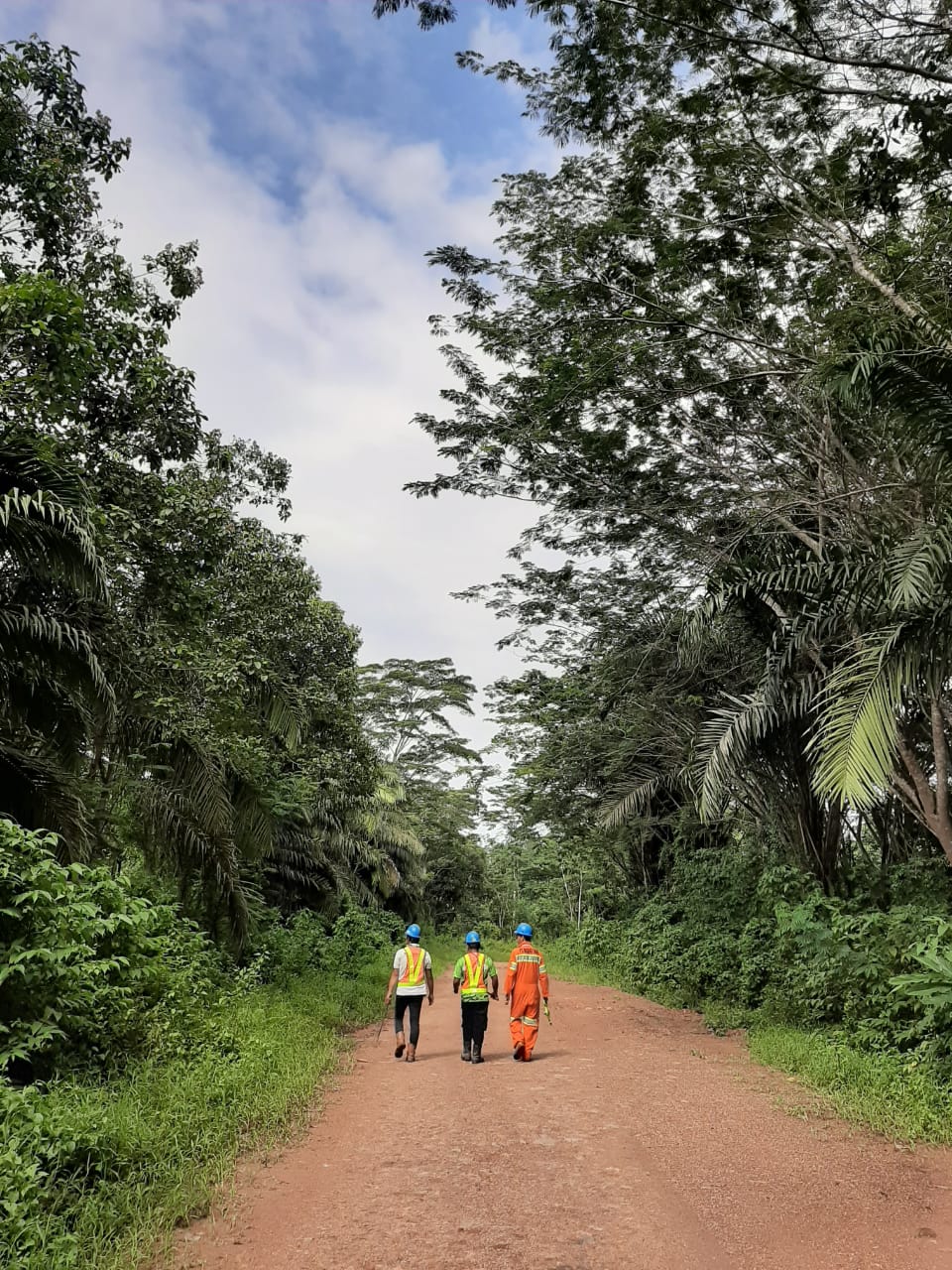Abstract
References
Apiolaza LA. 2009. Very early selection for solid wood quality: screening for early winners. Annals of Forest Science 66(6):601–601. https://doi.org/10.1051/ forest/2009047.
Arif A. 2018. Solusi Bagi Lahan Marginal. Harian Kompas. Senin. Halaman 14. Sains, Lingkungan dan Kesehatan. [16 April 2018]
Ashaduzzaman MD, Kayes AK, Shams MI. 2011. Natural decay resistance of Acacia auriculiformis A. Cunn. Ex Benth. and Dalbergia sissoo Roxb.
Bangladesh Journal of Science and Industrial Research 46(2):225–230. https:// doi.org/10.3329/bjsir.v46i2.8189.
Baqui SA, Shah JJ. 1985. Histoenzymatic studies in wood of Acacia auriculiformis Cunn. during heartwood formation. Holzforschung 39:311–320.
Bowyer J, Shmulsky R, Haygreen JG. 2003. Forest Products and Wood Science: An Introduction. 4th Edition. Iowa: Iowa State University Press.
Bowyer J, Shmulsky R, Haygreen JG. 2007. Forest Products and Wood Science: An Introduction 5th Edition. Iowa: Blackwell Publishing.
Bulgannawar BN, Math BBM. 1991. The role of Acacia auriculiformis in afforestation in Karnataka, India. In Advances in Tropical Acacia Research. Ed. JW. Turnbull. ACIAR Proceedings no 35. Australian Centre for International Agricultural Research. Canberra.
Datta R. 1981. Acidogenic fermentation of lignocellluose-acid yield and convertion of component. Biotechnology and Bioengineering 23:2167–2170.
Des Santos Lourenço AC. 2008 The influence of Eucalyptus globulus heartwood in pulp production (thesis). Lisboa: Universidade Tecnica de Lisboa.
Demirbas A. 2001. Relationships between lignin contents and heating values of biomass. Energy Conversion and Management 42:183–188.
Demirbas A. 2002. Relationships between heating value and lignin, moisture, ash and extractive contents of biomass fuels. Energy Exploration & Exploitation 20(1):105–111.
https://doi.org/10.1260/01445980276 0170420.
Demirbas A. 2003. Relationships between lignin contents and fixed carbon contents of biomass samples. Energy Conversion and Management 44(9):1481–1486. https://doi.org/10.1016/S0196-8904(02)00168-1.
Demirbas A. 2004. Combustion characteristics of different biomass fuels. Progress in Energy and Combustion Science 30(2):219–230. https://doi.org/10.1016/j.pecs. 2003.10.004.
Demirbas T, Demirbas C. 2009. Fuel properties of wood species. Energy Sources, Part A: Recovery, Utilization, and Environmental Effects 31(16):1464–1472. https://doi.org/10.1080/15567030802093153.
Demirbas A. 2009. Social, economic, environmental, and policy aspects of biofuels. Applied Energy. 86(Supplement 1):S108–S117. https://doi.org/10.1016/ j.apenergy.2009.04.036.
Dünisch O, Richter HG, Koch G. 2010. Wood properties of juvenile and mature hardwood in Robinia pseudoacacia L. Wood Science Technology 44:301–313.
Eberhard AA. 1990. Fuelwood calorific values in South Africa. South African Forestry Journal 152(1):17–22. https://doi.org/10.1080/00382167.1990.9629014.
Evert RF. 2006. Esau's Plant Anatomy Third edition. New Jersey: John Wiley & Sons Inc.
Gami B, Limbachiya R, Parmar R, Bhimani H, Patel B. 2011. An evaluation of different non-woody and woody biomass of Gujarat, India for preparation of pellets-A solid biofuel. Energy Sources, Part A: Recovery, Utilization, and Environmental Effects 33(22):2078–2088. https://doi.org/10.1080/1556703090 3503183.
Günther B, Gebauer K, Barkowski R, Rosenthal M, Bues C. 2012, Calorific value of selected wood species and wood products. European Journal of Wood and Wood Products 70(5):755–757.
Hasan ES, Jahiding M, Mashuni, Ilmawati WOS, Wati WA, Sudiana IN. 2017. Proximate and the calorific value analysis of brown coal for high-calorie hybrid briquette application. Journal of Physics: Conference Series 846(Conference 1):012–022. https://doi.org/10.1088/ 1742-6596/846/1/012022.
Hafrén J, Fujino T, Itoh T. 1999. Changes in cell wall architecture of differentiating tracheid of Pinus thunbergii during lignification. Plant Cell Physiology 40(5):532–541.
Hendrati RL, Nirsatmanto A, Baskorowati L, Fauzi A. 2011. Pemanfaatan berbagai jenis kayu energi untuk kelangsungan industri arang kayu di Jawa. Prosiding Workshop Sintesa Hasil Penelitian Hutan Tanaman. Bogor, 1 Desember 2011.
Hendrati RL, Nurrohmah SH, Susilawati S, Budi S. 2014a. Budidaya Acacia auriculiformis untuk Kayu Energi. Bogor: IPB Press.
Hendrati RL, Nurrohmah SH, Susilawati S. 2014b. Benih unggul kayu energi Calliandra calothyrsus dan Acacia auriculiformis untuk restorasi ekosistem dan antisipasi perubahan iklim. Prosiding Seminar Nasional Benih Unggul untuk Hutan Tanaman, Restorasi Ekosistem dan Antisipasi Perubahan Iklim. Yogyakarta, 1920 November 2014.
Hendrati RL. 2016. Environmentally friendly bioenergy plantations by using genetically improved legume species. Proceeding the 7th International Conference on Green Technology. Malang, October 56th 2016.
Hills WE. 1987. Heartwood and Tree Exudates. Berlin: Springer-Verlag.
Hinchee M, Rottmann W, Mullinax L, Nehra N. 2009. Short-rotation woody crops for bioenergy and biofuels applications. In Vitro Cellular & Developmental Biology -Plant 45(6):619–629. https://doi.org/10.1007/s11627-009-9235-5.
Islam SS, Islam MS, Hossain MAT, Alam Z. 2013. Optimal rotation interval of akashmoni (Acacia auriculiformis) plantations in Bangladesh. Kasetsart Journal (Social Science) 34:181–190.
Kataki R, Konwer D. 2001. Fuelwood characteristics of some indigenous woody species of North-east India. Biomass Bioenergy 20:17–23.
Knigge W. 1993. Giant sequoia (Sequoiadendrongiganteum) in Europe. Holz Roh Werkst 51:145–155.
Krzyzaniak M, Stolarski MJ, Waliszewska B, Szczukowski S, Tworkowski J,
Zaluski D, Snieg M. 2014. Willow biomass as feedstock for an integrated multi-product biorefinery. Industrial Crops and Products 58:230–237.
Korinobu S, Yomogida H, Yamaguchi K. 1990. Annual Report for Tree Breeding Institute 24 Mito.
McKendry P. 2002. Energy production from biomass (part 1): overview of biomass. Bioresource Technology 83:37–46.
Moya R, Berrocal A. 2010. Wood colour variation in sapwood and heartwood of young trees of Tectona grandis and its relationship with plantation characteristics, site, and decay resistance. Annals of Forest
Science 67:109–109. https://doi.org/10.1051/ forest/2009088.
Novaes E, Kirst M, Chiang V, Sederoff HW, Sederoff R. 2010. Lignin and biomass: A negative correlation for wood formation and lignin content in trees. Plant Physiology 154(1):555–561.
Panshin AJ, de Zeeuw C. 1980. Textbook of Wood Technology. Fourth Edition. New York: Mc-Graw Hill.
Peksa-Blanchard M, Dolzan P, Grassi A, Heinimö J, Junginger M, Ranta T,
Walter A. 2007. Global Wood Pellet Markets and Industries: Policy Drivers, Market Status and Raw Material Potential. Utrecht: University of Technology Utrecht.
Perez D. 2004. Heartwood, sapwood and bark contents of Bombacopsis quinata in Costa Rica. Journal of Tropical Forest Science 16(3):318–327.
Perez D. 2004. Heartwood, sapwood and bark contents of Bombacopsis quinata in Costa Rica. Journal of Tropical Forest Science 16(3):318–327.
Santana WMS, Calegario N, Arantes MDC, Trugilho PF. 2012. Effect of age and diameter class on the properties of wood from clonal Eucalyptus. Cerne Lavras Journal 18(1):18. https://doi.org/10.1590/S0104-77602012000100001
Sitoputro BS. 2014. Analisis kandungan Lignin pada heartwood dan sapwood Acacia auriculiformis A. Cunn. Ex Benth. [undergraduated thesis]. Yogyakarta: Faculty of Biology, Gadjah Mada University.
Stolarski MJ, Krzyzaniak M, Snieg M, Slomiñska E, Piórkowski M. Filipkowski R. 2014. Thermophysical and chemical properties of perennial energy crops depending on harvest period. International Agrophysics. 28:201–211. https://doi.org/10.2478/intag-2014-0009.
Sunarti S, Na'iem M, Hardiyanto EB, Indrioko S. 2013. Breeding strategy of acacia hybrid (Acacia mangium × A. auriculiformis) to increase forest plantation productivity in Indonesia. Jurnal Manajemen Hutan Tropika. 19(2):128–138. https://doi.org/10.1093/ aob/mcp118. .
Syachri TN. 1983. Sifat Arang, Briket Arang dan Alkohol yang Dibuat dari Limbah Industri Kayu. Bogor: Laporan PPPHH Bogor No. 165.
Supartini. 2009. Komponen kimia kayu meranti kuning (Shorea microbalanos). Jurnal Penelitian Dipterokarpa 3(1):43–50.
Susanto M, Prayitno TA, Fujisawa Y. 2008. Wood genetic variation of Acacia auriculiformis at Wonogiri Trial in Indonesia. Journal of Forestry Research 5 (2):125–134.
Tullus A, Ryytter R, Tullus T, Weih M, Tullus H. 2012. Short-rotation forestry with hybrid aspen (Populus tremula L. × P. tremuloides Michx.) in Northern Europe. Scandinavian Journal of Forest Research 27: 10–29.
White R. 1987. Effect of lignin content and extractives on the higher heating value of wood. Wood and Fiber Science 19(4):446–452.
Wilson TO. 2010. Factors affecting wood pellet durability (thesis). Pensylvania: Pensylvania State University.
Wong ML, Cannon CH, Wickneswari R. 2011. Identification of lignin genes and regulatory sequences involved in secondary cell wall formation in Acacia auriculiformis and Acacia mangium via de novo transcriptome sequencing. BioMedical Central Genomics 12:342. https://doi.org/10.1186/1471-2164-12-342.
Zhigang P, Minquan Y. 1987. Australian acacias in the People's Republic of China in Australian Acacias in Developing Countries, ACIAR (Australian Centre for International Agricultural Research) Proceedings No. 16, Editor
Turnbull JW, Brown Prior Anderson Pty Ltd, Victoria, Australia.
Zhonglian H. 2009. Identification and characterization of genes involved in heartwood formation in black walnut (Juglans nigra L) (dissertation). Indiana: Purdue University.
Zobel BJ, Jett JB. 1995. Genetics of Wood Production. London: Springer-Verlag.
Authors

This work is licensed under a Creative Commons Attribution 4.0 International License.
Jurnal Manajemen Hutan Tropika is an open access journal which means that all contents is freely available without charge to the user or his/her institution. Users are allowed to read, download, copy, distribute, print, search, or link to the full texts of the articles in this journal without asking prior permission from the publisher or the author. This is in accordance with the Budapest Open Access Initiative (BOAI) definition of open access.




